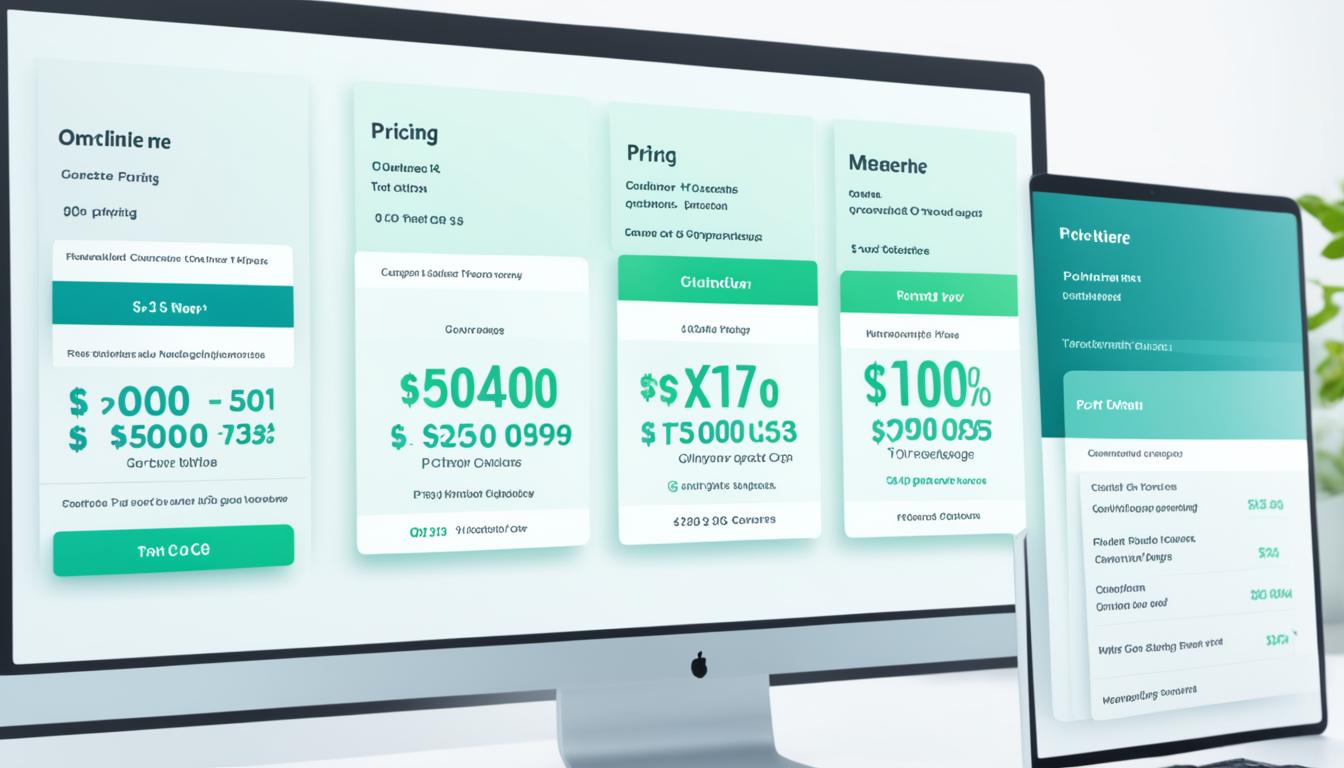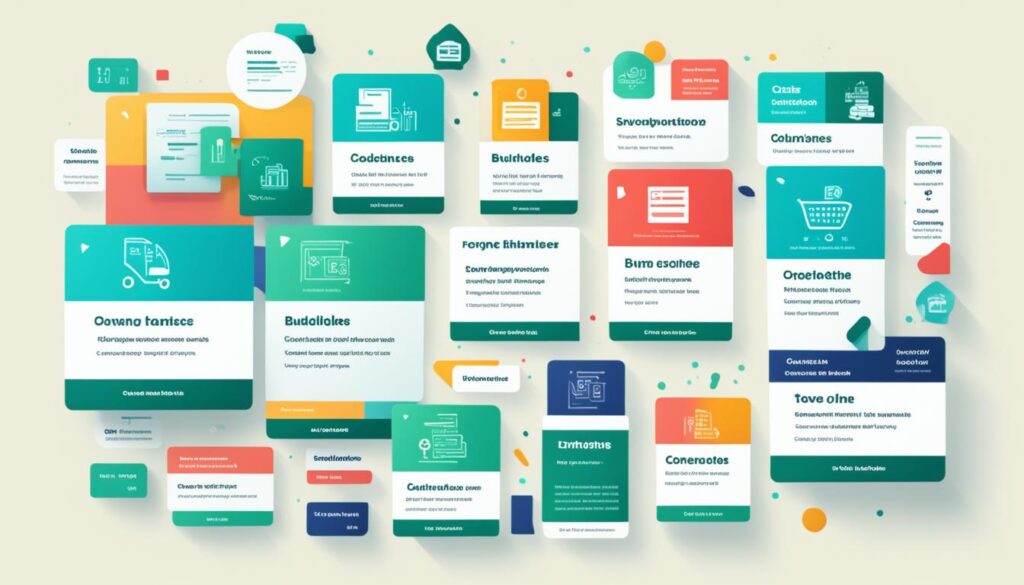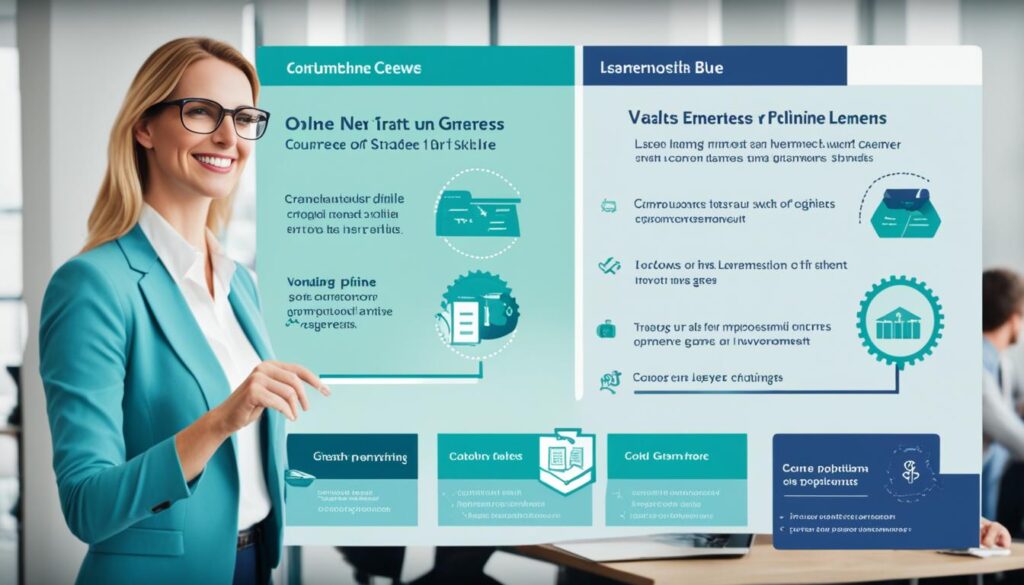Physical Address
304 North Cardinal St.
Dorchester Center, MA 02124
Physical Address
304 North Cardinal St.
Dorchester Center, MA 02124

Discover how to price your online course effectively for maximum profitability and accessibility. Optimize your pricing strategy with expert insights tailored to your niche and target audience.
The trend towards online learning offers a great chance to share your knowledge and make money. But, setting the right price for your online course is vital. This ensures you earn well while making your course affordable for people. In this guide, you’ll learn important tips for pricing your course. We’ll cover everything from knowing your market to how to stand out with your price. This will help you feel sure about pricing your online course just right.
When you set the price for your online course, think about many factors. These factors are like production costs, who the course is for, how many people want it, what other courses are out there, and how much people think it’s worth. Figuring out the right price needs a lot of market research. You also need to know about the various pricing models used in online education.
The price of an online course isn’t just about how much it costs to make. It’s also about your audience’s money and how much they want your course. Plus, it’s about what else is out there. The perceived value of your course, meaning how much people think they’ll benefit, is a big deal too. This influences how much they are willing to pay.
Doing detailed market analysis is key for your pricing strategy. Look at the prices and what courses are out there, and ask your target audience what they think. This will help you find a price that people are willing to pay. It also matches what the market expects and shows the value your course brings.
| Key Pricing Factors | Considerations |
|---|---|
| Production Costs | Time and resources invested in creating course content, developing the learning platform, and providing ongoing support |
| Target Audience | Purchasing power, willingness to pay, and perceived value of the course |
| Market Demand | Popularity of the course topic, potential for growth, and level of competition |
| Competitor Pricing | Pricing range, features, and perceived value of similar courses in the niche |
| Perceived Value | Benefits, outcomes, and transformations the course will provide for students |
To get the pricing right, learn about these online course pricing factors. Do solid market research. This lets you set a price that matches what the market wants. It will also show the value your course offers.
Before you decide on the price of your online course, make sure you know what it offers. What will students get from your course? Being clear about this makes your course stand out and justifies its price.
Think about the real and hidden benefits your course brings. What new skills, knowledge, or personal growth will your course offer? How will it change your students’ lives? Explaining these points clearly will make your course seem valuable to your audience.
Also, think about what makes your course special or extra useful. This could be special groups, personal coaching, or extra materials. By highlighting these, you make your course’s price seem more reasonable. This can show why your course is worth the money.
| Pricing Factor | Consideration |
|---|---|
| Online Course Value Proposition | Clearly articulate the specific benefits, outcomes, and transformations that students will achieve. |
| Course Differentiation | Highlight the unique features, resources, or support that set your course apart from competitors. |
| Pricing Based on Benefits | Justify the course price by emphasizing the tangible and intangible value that students will receive. |
By clearly defining the value of your course, you can set a price with confidence. This will make your course more attractive to your audience. It positions your course as a wise investment for their growth, personal or professional.

Choosing the right price for your online course means looking at different models. You should think about one-time payments, subscriptions, tiered pricing, and bundles. Each has its advantages and can suit different courses and customers.
A one-time payment gives you all the money up front. This works best for courses with clear goals and a set time to finish. On the other hand, subscriptions mean you get regular income. They also keep students interested longer in your course.
Tiered pricing lets you offer different content at different prices. This not only earns more but also appeals to more people. Also, bundling together courses or extra resources can add value. It makes your courses seem more valuable to buyers.
First, figure out how much it costs to make your online course. This includes time, money, and effort used for the content, the platform, and support. Make sure your price includes these costs and earns you a profit.
Next, look at what your rivals are charging for similar courses. Know the price range, key features, and customer value. This information helps you set a price that matches industry standards and highlights what makes your course special.
After you know your costs and the market’s standard prices, pick a good profit margin. Think about your revenue goals, how scalable your course is, and possible upgrades. These factors will help keep your course profitable in the long run.
Using online course discounts wisely can lure students to enroll early and feel the need to hurry. It’s smart to give a short “early bird” discount to get people to sign up fast. This approach hands you early income and builds a base of devoted students.
An early bird discount taps into the buzz of your course’s launch. It makes people want to register soon to lock in a lower price. With a time limit on this deal, students fear they’ll miss it, boosting your sign-up numbers.
Besides early bird discounts, consider bundle deals and upselling. Grouping courses or adding coach sessions, certifications, or exclusive access can make your offer more compelling. It also adds to your revenue and offers students more than they expected.

Working smart with course discounts and bundles draws in savvy shoppers, ramps up those crucial first sales, and builds a strong fan base. Well-planned, these strategies play a key role in your online course business’s success and earnings.
To find the best price for your online course, try A/B testing. Test different prices, payment methods, and special deals with your audience. Using data from these tests, you can improve your pricing to make more money from your course.
A/B testing helps you try out various pricing strategies to see what works best. This means you test different prices, how people pay, and any special deals. By looking at the results, you can tweak your prices to get more people to buy and increase your revenue.
Also, pay attention to what your customers say. Use surveys, reviews, and direct talks to figure out what they think your course is worth. Keep making your prices better by listening to their feedback. This way, you can meet their needs and keep them happy.
| Pricing Optimization Strategies | Key Benefits |
|---|---|
| A/B Testing Pricing Strategies |
|
| Analyzing Customer Feedback |
|
By mixing online course pricing A/B testing with listening to customers, you can improve your pricing. This strategy helps you win over your audience and make more money with your online courses.
It’s key to think about your audience when deciding on course prices. Make sure your prices match what your learners need. This could mean having prices that suit people at all levels of learning and from many places.
For online courses aimed at beginners, prices should be easy to afford. This helps new students start their learning journey. Advanced courses, covering specialized topics, can be priced higher. They offer deeper knowledge for learners with experience. Think about what your courses offer. This helps you set the right prices for your audience.
Consider where your students are from when setting prices. Prices should be fair based on local costs and economic conditions. Remember, students from different places may have diverse needs. By looking at the big picture, you can make sure your courses are priced right for everyone.

Explaining why your course is worth the price is vital. Show the benefits, outcomes, and changes students will get. Use testimonials, case studies, and results to back up your value-based pricing.
Think ahead about what might make students hesitate on the cost. Be ready to talk about why your course costs what it does. Explain its value clearly. This can help a lot to ease concerns and get more people to join.

Pricing your online course right is key for success. Understand what makes a price work. Look at different ways to price. Keep testing and changing your approach.
This helps make your course more profitable and open to all. Make sure your course offers great value. Explain why your price makes sense. Also, listen to student worries to keep them happy.
Follow top tips for setting your course price. Check market trends and figure out what sets your course apart. Use discounts wisely. This will help your price connect with students. Always improve your pricing based on what customers say and what data tells you. This keeps your course a good deal and helps it thrive financially.
The e-learning world is growing fast. It’s a big chance to make money teaching online. If you get your course price right, you could earn more, run a successful online school, and help learners reach their dreams.